

Suunto Blog
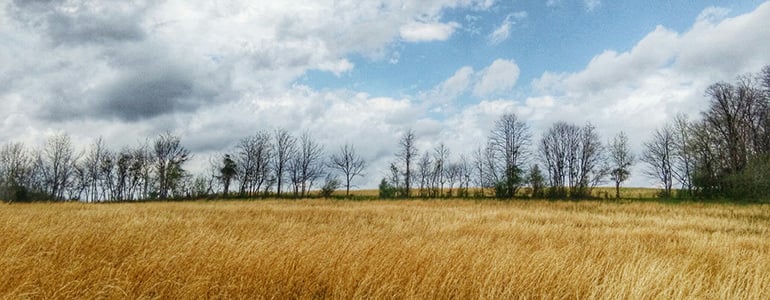
The run continues for real-life Forrest Gump
There are marathons and ultras. And then there’s Pat Sweeney’s personal challenge – a 5,000km run across America. The real-life Forrest Gump has been running steadily since January and is hoping to complete his epic west-to-east mission mid May in Boston. He tells us he’s having a great adventure and meeting some interesting characters along the way – including Elvis and several snakes… “I have picked up my mileage and am trying to now average around 40 miles (64 km) a day and even ran over 50 (80 km) on back to back days. The weather is getting better and my spirits are up. I ran through Arkansas then across the Mississippi river and up the Blues highway to Memphis Tennessee. I stopped at Graceland to see Elvis and am currently just south of Nashville.”
Staying hydrated is vital to staying the distance. ©Pat Sweeney
He adds: “Last week a sheriff in Mississippi let me stay in a tornado shelter when the weather was good. Then a couple days ago while in Tennessee there were actual tornado warnings in the area I was running. Storms come out of nowhere and I have got stuck in the hail a few times. It's now spring so it's fun to be outside and see the seasons change. Flowers are blossoming animals are getting frisky and I have seen seven snakes in the last two days.”
Time to run – Sweeney enters the deep south.The Suunto supported runner is now clocking over 200 miles a week. “My body is tired and fatigued but I keep trudging along with a smile and look forward to each days adventure.I'm hoping now to finish my run in Boston by running the Boston Marathon course since I will be missing this year’s race. I should get there around May 10th if all goes well. It should be a lot of fun.”
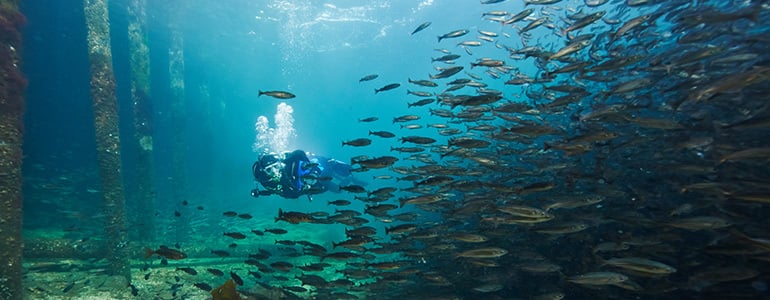
Computer Algorithms Explained
Knowledge is power – and having an understanding of what's going on inside your dive computer will help you dive more safely and with peace of mind. Here's what you need to know on Suunto's algorithm that keeps you safe: Think of dive algorithms as you do the Internet: Few of us can actually explain how email works, but we all agree that life is infinitely better with it. The algorithms powering your dive computer are much the same: You need only appreciate how you benefit. Algorithms are ever-adapting formulas that constantly measure how much nitrogen is accumulating in your body as you remain underwater.
© Janne Suhonen
When you first started diving, relying on the tables was fine because, most likely, your air consumption wasn’t efficient for you to stay down long enough to complicate things. Then, at some point, you noticed everyone with a dive computer was enjoying longer dives. They could duck down a few meters to swim nearer a shark or turtle, and this didn’t significantly shorten that dive or subsequent dives. Simply put, they were carefree. They knew their computers were factoring in these depth changes to keep them safe.
When we dive, inert gases—such as nitrogen, which our body doesn’t need—are dissolving into the bloodstream. At any given point, even when you’re on dry land, your veins and arteries have microbubbles filled with these inert gases. When small, they’re of no consequence. But when they expand, say, from time at depth, they begin to limit off-gassing—that is, your body’s ability to expel nitrogen.Only Suunto factors microbubbles into their algorithms. The deeper you dive, the greater a risk factor they potentially become. Their dive computers will force you to decrease your ascent rate when microbubbles are starting to become an issue.
Suunto’s Reduced Gradient Bubble Model, or RGBM, is the industry’s most accurate representation of what’s happening in your body when you dive. It automatically adjusts to what you’re doing underwater. After you’ve told it you are diving air or a particular Nitrox blend, it requires no further manual input, leaving you free to enjoy your dive.
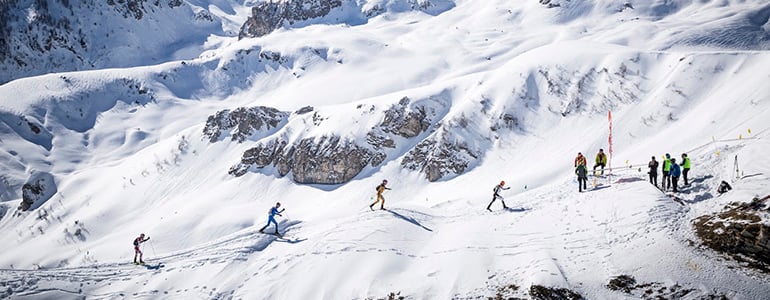
Ski-mo success for Kilian Jornet and Emelie Forsberg
Kilian Jornet and Emelie Forsberg climbed to second and third overall respectively in the Ski Mountaineering World Cup rankings after some solid performances at Prato Nevoso, Italy. Kilian pushing downhill. ©ISMFAnother exciting weekend for Suunto Ambassadors, Kilian Jornet and Emelie Forsberg. The pair joined dozens of the world's best ski-mo racers under the incredible blue skies of Prato Nevoso, Italy for one of the final races of the season.Kilian had some mixed results – finishing second in the vertical race, fourth in the individual race and 22nd in the sprint. He has two more shots at reaching his ultimate goal at the end of April – winning the overall ranking in the World Cup, which combines the different Ski Mountaineering World Cup disciplines. Currently, Kilian lies in second spot behind overall leader Robert Antonioli. He said: ‘‘The combined World Cup is a title I’d really like to try to win because it proves the versatility of the skier in the different events. I’m second right now, but I am I hoping to score enough points in the two races left, to be able to fight for victory against Roberto.”Emelie in action. ©ISMFNot to be outdone, Emelie Forsberg placed second in both the individual and sprint races, and fourth in the vertical race. It was her first-ever second-place finish in a World Cup competition, and with two team races left, moves her up to third position in the overall rankings.She said: “I am feeling very well in this moment of the season. The results this weekend couldn’t have been better and now I am third in the overall ranking. I’ll try to keep the good energy for the races left.”
Despite the individual events coming to an end, the Ski Mountaineering World Cup is far from over. Check out Check out ISMF on Facebook for updates, photos and lots of exciting videos from the Ski Mountaineering World Championship.RACE LINK:http://www.mondoleskialp.it/All photos ©ISMF
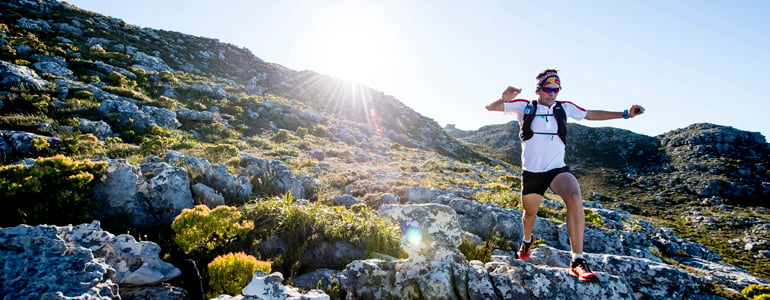
Test yourself against Table Mountain FKT
It's the trend that has captured the imagination of runners the world over – setting FKTs, or Fastest Known Times – and ultra runner Ryan Sandes may have just created one of the most scenically spectacular routes. Continuing our series of athletes sharing their best efforts, the South African athlete goes behind the scenes on his most recent feat – an FKT across Cape Town's iconic Table Mountain.
It's fair to say that Ryan Sandes is most at home on long distance trails and ultras. A year ago he and Ryno Griesel set an FKT of 41h 49m crossing the 220km Drakensberg mountains.
Now, on familiar terrain but an unfamiliar distance the Suunto ambassador has just blasted a 15.1 km trail across the rocky spine of the Cape Peninsula in 2h 2m 13s.
“The run starts with a massive climb up Llandudno Ravine to warm your lungs and legs up,” Ryan tells us. “This is a super technical climb to the top of Table Mountain with lots of rock stairs and scrambling. The views on top of Table Mountain are amazing and makes every drop of sweat getting up to the top worth while.”
Ryan covers the 700 m ascent in 32 minutes, but the vertical isn't the only thing to worry about on the route.
“Once on top of Table Mountain the route is a little flatter but it is not completely flat. It is very technical running along a single track which can be quite overgrown and seeing large snakes is a common occurrence. Once you get to the Valley of the Red Gods you have a few small ladders to negotiate before descending Platteklip Gorge.
This is the hardest part of the run for me, as you have big rock stairs leading down Platteklip which kill your legs and you also have to constantly dodge tourists hiking up the mountain! Once on the contour path, the running is fairly fast to the finish but your legs will be feeling tired after the big descent off Table Mountain.
The route is just under 16km, but is very slow moving and you can never get into any rhythm. But I love it as it is in my 'back garden' and I feel right at home.”
All images ©Craig Kolesky/ Red Bull Content Pool
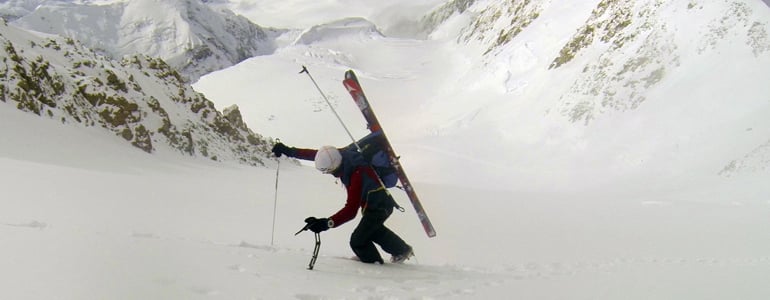
Kilian turns his gaze to the mother of mountains
As the skimo season comes to a close, Kilian Jornet is hanging up his skis and turning his attention to the big adventures ahead for the 2015 summer season. Quite literally, one stands out above all the rest: Everest.
As part of his Summits of My Life project, which has seen him set speed records on seven mountains around world, Everest will be the project’s tallest order yet.Jornet is heading to Everest for his first time during the Himalayan climbing season, this spring, to begin what he says will be a long, patient process of preparation and discovery.“I conceive of this trip to Everest as a chance to learn,” Jornet says. “To really get to know the mountain and its surroundings and to learn everything my colleagues can teach me.
And which photographer took this shot? Kilian himself!
“I don’t know when we will be able to attempt the challenge as that will depend very much on the weather, acclimatization and the conditions we find there. I’m taking this first trip as an opportunity to learn.”His first visit to the highest mountain in the world will be focused on becoming familiar with the area, the planned route and, crucially, the effects of altitude. Everest will be Jornet’s first 8,000m mountain. Completing a rapid ascent on his first expedition is not something he says is on the cards. “We know we have a long way ahead of us,” he says. “I think this will be a long-term project that we hope to complete in the coming years.”
Depending on weather conditions, Jornet will attempt the ascent either via Norton Pass or Hornbein Couloir – both rarely climbed routes. After he’s returned from the roof of the world, Jornet's plan is to hit the trail running scene in Europe and the US. He is not joining any fixed competitive circuit, but will run the races that most inspire him.His first race of the season will be the Mount Marathon in Alaska, one of the oldest in the world. It’s a vertical race to the top of the race’s namesake, Mount Marathon (922m), on US Independence Day. Next, he’s running in the Hardrock (USA), followed by the Tromsö Skyrace (Norway), the Sierre Zinal (Switzerland), the Skaala Uphill (Norway) and then finally, back on his home turf, the Ultra Pirineu in the Pyrenees.
Main image shows Kilian on Denali. ©Summits of my Life

MENTAL-STRENGTH-ADDING WORKOUT FOR RUNNERS
Ashley Relf is a San Francisco based coach and athlete. She started her athletic career as a successful gymnast and was training six hours a day already as a 12-year-old. Unfortunately a neck injury ended her career at age 13 and she shifted her focus to volleyball, soccer, basketball, and diving. At college she played soccer and ran track.
Post college Ashley played soccer semi-professionally for a year but soon became an avid runner and triathlete.
“Currently I am a mother of a 6 1/2 month old son, Joaquin and an elite runner training to chase after the Olympic Trials Qualifying time in the marathon,” she says.
In addition to being a top athlete Ashley also holds a degree in Sport psychology, and a Certificate in Exercise & Sport Performance. She coaches individual clients as well as high school, club, college, corporate and professional level teams in both mental strength training and athletic performance in running, triathlon and strength training.
“My strengths as a coach are that I understand the rigors of training to reach higher levels of performance and the psychological challenges of working through the extreme demands of competition,” she says.
“I help my clients find the right steps to take to enhance their performance and reach a better understanding of her or his strengths and weaknesses and what needs to be done to move forward.”
THE SPEEDY FINISH LONG RUN
Ashley Relf’s workout, The Speedy Finish Long Run, is great for those who want a workout to help simulate pushing through mental and physical race fatigue towards the later stages of a race.
“This exercise will help you finish a race strong and fast even when your body and mind are trying to get you to stop or slow down,” she says.
The Speedy Finish Long Run is aimed at competitive runners who already have built a solid foundation with their base mileage.
Note: Adjust the heart rates (HR) in the sample workout based on your own HR zones.
Step 1
“Run the first 10 miles at your normal conversational pace.”Distance: 10 miles (15 km)Target HR: 70%–80% of your max HR
Step 2
“For the next 3 miles start running at your tempo pace (about a minute/mile faster than your normal conversational pace).”Distance: 3 miles (5 km)Target HR: 81%–93% of your max HR
Step 3
“Run the next mile at your 5k race pace or an effort that you would not want to talk with your running buddy at.”Distance: 1 mile (1,5 km)Target HR: 94%–100% of your max HR
Step 4
“Run the last 2–3 miles at your normal conversational pace.”Distance: 2–3 miles (3–5 km)Target HR: 70%–80% of your max HR
“The goal of this workout is to gain confidence from your speedy finish long runs to push through the mental and physical challenges and keep increasing the effort,” coach Relf says.
For more info about Ashley Relf and her coaching go to www.traincompetegetfaster.com














































































